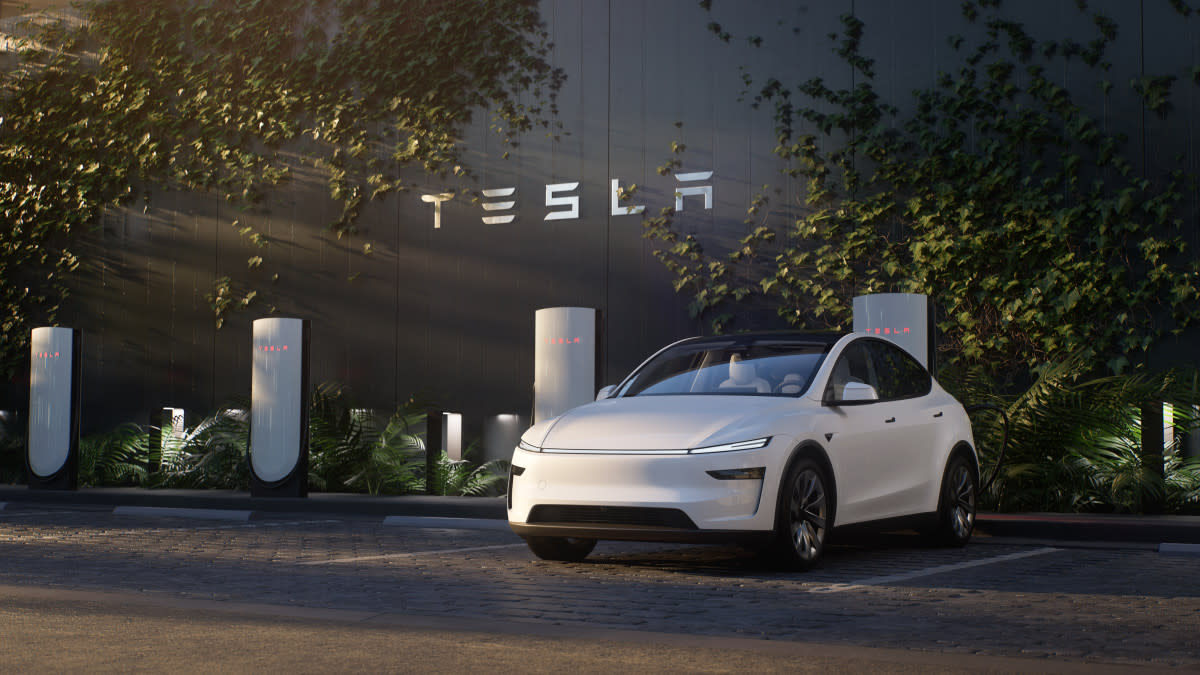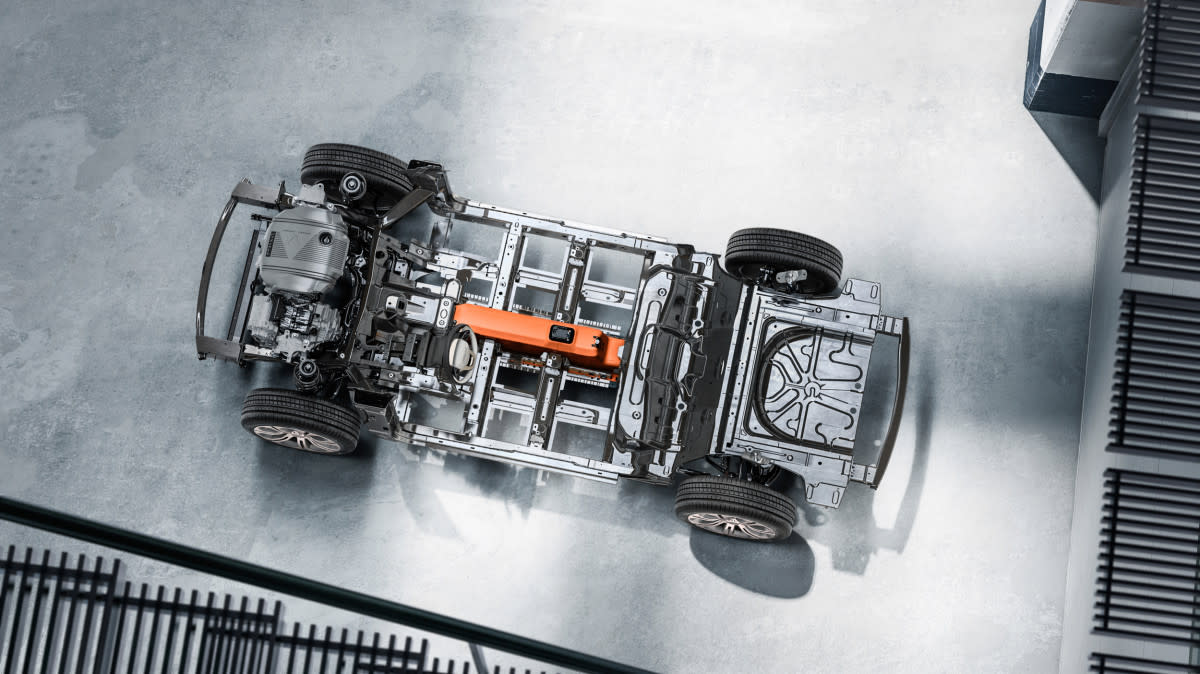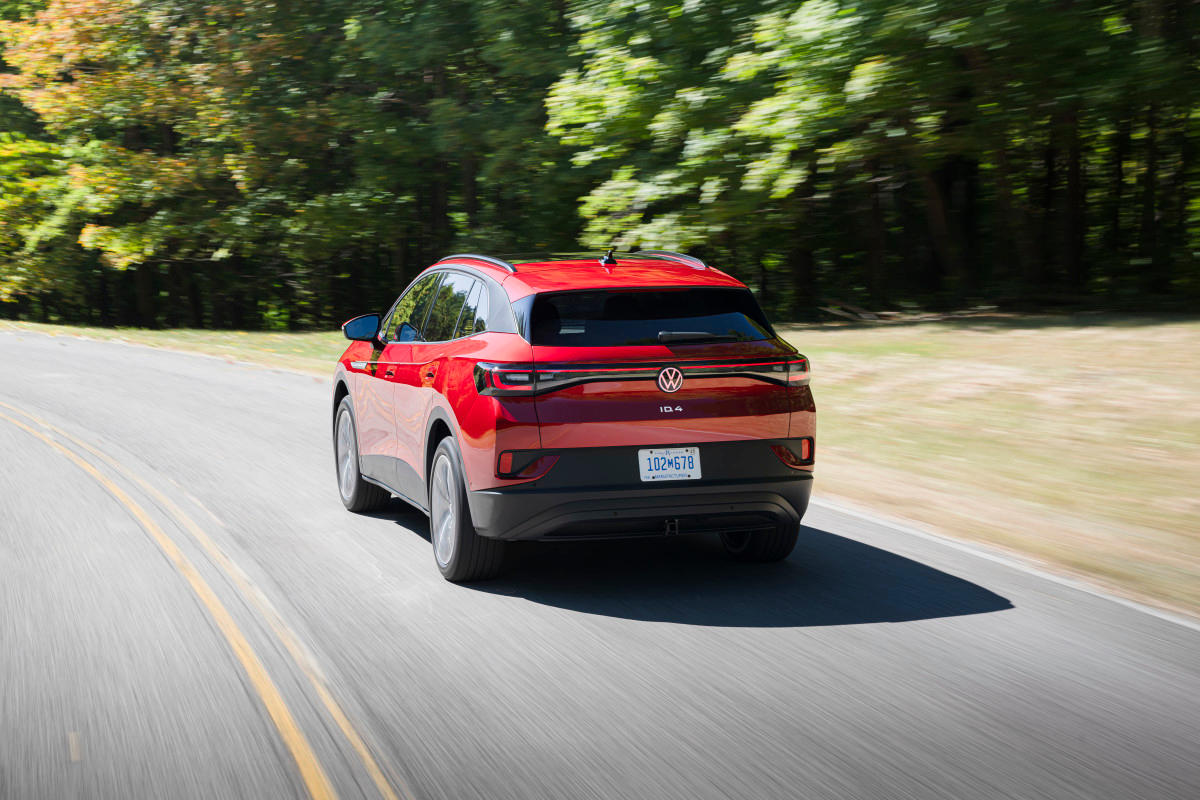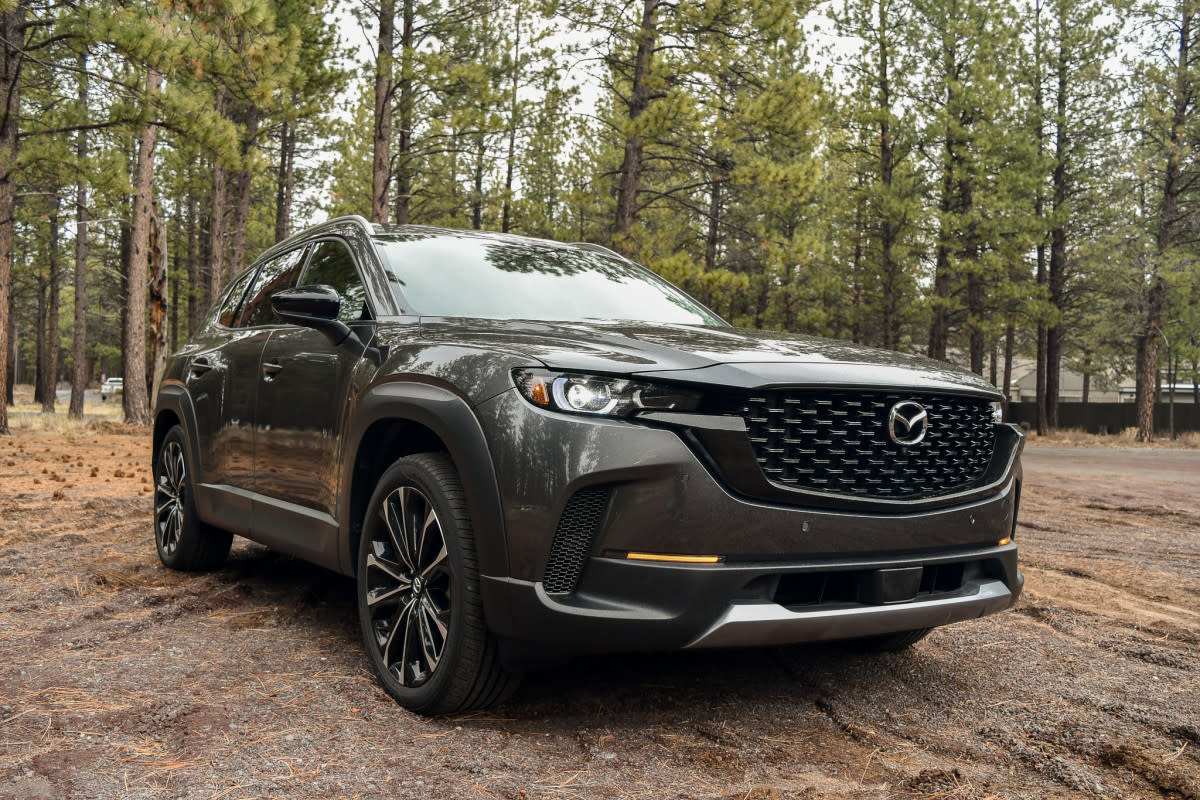
Subaru Icons Face Stylish Threat from Mazda originally appeared on Autoblog.
A proper Subaru competitor
You don’t have to be a Subaru owner to understand the brand’s target audience. If you’re a parent who answers the call of the wild, a dog owner, or someone who appreciates a good value, you’ve likely shopped for a Subaru at least once (or you own one now). Mazda examined the typical buyers of the Subaru Outback and Forester crossover SUVs and decided to throw a low blow by introducing the CX-50 in 2021. The body shape is long with a sloped roofline in the back, similar to the Outback, but has similar cargo space figures to the Forester. With a standard intelligent AWD system, off-road-centric drive modes, rugged styling, and outdoorsy marketing featuring images of families with dogs and/or kids, Mazda knew exactly what they were doing.
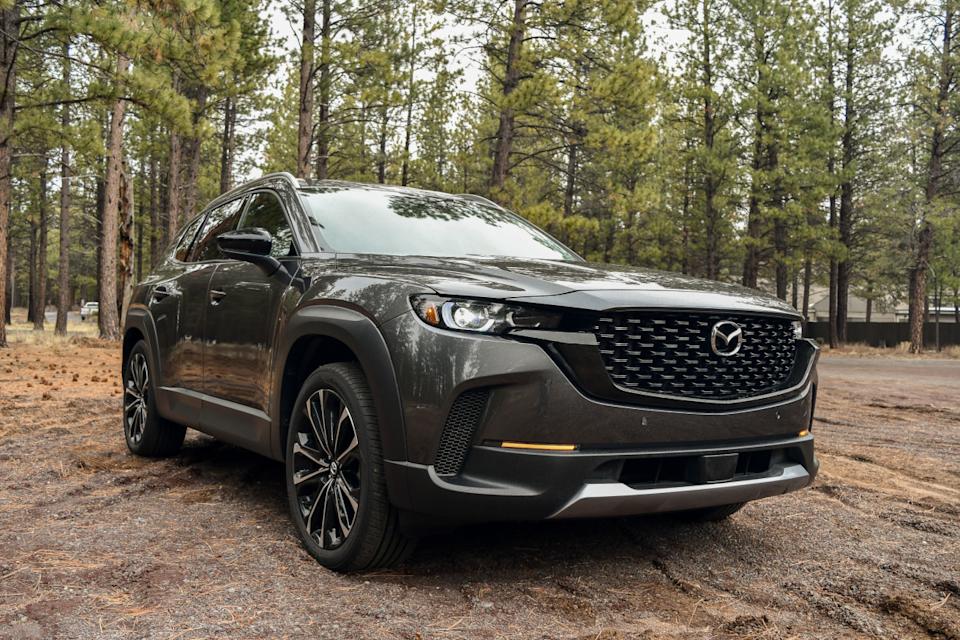 Kristen Brown
Kristen BrownView the 2 images of this gallery on the original article
When Mazda decided to partner up with Toyota to produce the CX-50 hybrid (utilizing the hybrid system in the RAV4 hybrid), it put itself ahead of the pack, since the Outback still isn’t a hybrid, and the Forester was just hybridized for 2026. With the Forester being a true AWD hybrid SUV, it gives it a bit more of an edge against the CX-50, especially since the pricing of the Forester hybrid and the CX-50 hybrid is very similar. The Subaru Forester’s price range is $29,695 to $43,295 for the Touring Hybrid, while the CX-50 Hybrid’s pricing starts at $35,195 to $41,195. Not only is the Mazda less expensive, but it also has a more premium interior and a trusted hybrid system, while the Forester hybrid is an all-new system.
 Kristen Brown
Kristen BrownAs a gas-only car, we’ll compare the Mazda’s price range to the Outback. The Mazda starts at $31,995 and goes up to $44,495 for the 2.5 Turbo Premium Plus, while the Subaru Outback starts at $29,351 and goes up to $43,210. As you can see, the Mazda takes on the Forester and the Outback at the same time.
If power is important, the Mazda is hard to beat
The Mazda I reviewed was the 2.5 Turbo Premium Plus, which is the top-shelf model of the gas-only CX-50. Under the hood is a 2.5-liter turbo four-cylinder engine that generates 227 horsepower when regular octane fuel. However, when you use premium (which, ingeniously, Maza engineered it to handle both), the horsepower is boosted to 256. Of course, more horsepower comes at the cost of miles per gallon, but if you’re looking for a little pep in your step, filling up with premium every once and a while is a great way to do that. The Forester has a “Sport” model, which is more than an appearance package than anything else, but the Forester XT was discontinued in 2018. As far as power is concerned, the Forester doesn’t stand a chance, as stock figures aren’t more than 180 horsepower.
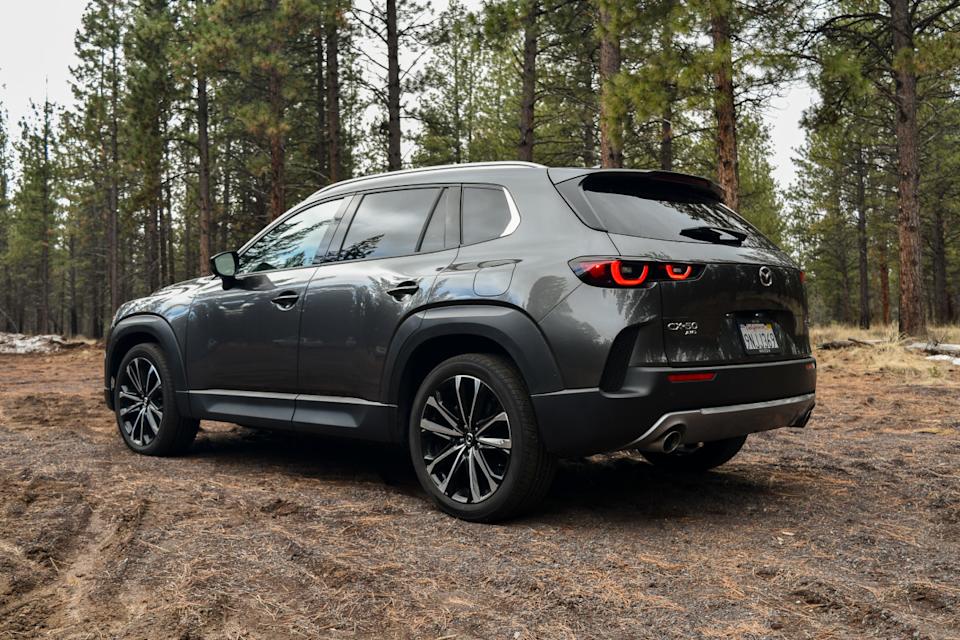 Kristen Brown
Kristen BrownThe Outback, on the other hand, can be bought with Subaru’s 2.4-liter turbocharged four-cylinder boxer engine in four trims: the Wilderness, Onyx XT, Limited XT, and the Touring XT. The Touring XT is the top-of-the-line trim level, and it’s meant to be what Mazda’s Premium Plus trim is: rugged luxury. The interior of both cars features creamy tan Nappa leather, all-weather features like heated mirrors, a heated steering wheel, heated seats, and complementary contrast stitching. The Outback’s turbocharged engine makes more horsepower at 260, but unless it’s in Sport mode, the CVT prioritizes a smooth ride that stays in the low end of RPMs to help keep mileage in the high 20s. When I had it, I was averaging 25 mpg. The CVT can certainly give the XT power when you put the pedal to the metal without too much rubberbanding, but the Mazda’s traditional automatic is much more responsive and refined.
Mazda’s intelligent AWD system helps the CX-50 be more efficient
The Subaru Forester and Outback both use a very traditional, mechanical AWD system. Since the front and rear wheels have a permanent connection to the engine, Subaru’s symmetrical system is known for its rigidity and longevity. Mazda’s system is similar, but much more electronically controlled. It’s an “intelligent” system that’s reactive and predictive, and when sensors don’t detect slipping (or predict slipping, based on factors like wheel speed, steering input, and windshield wiper usage), the system will split the torque to bias the front wheels. This helps the CX-50 get better mileage when AWD isn’t needed, and then be able to handle the unexpected at the same time.
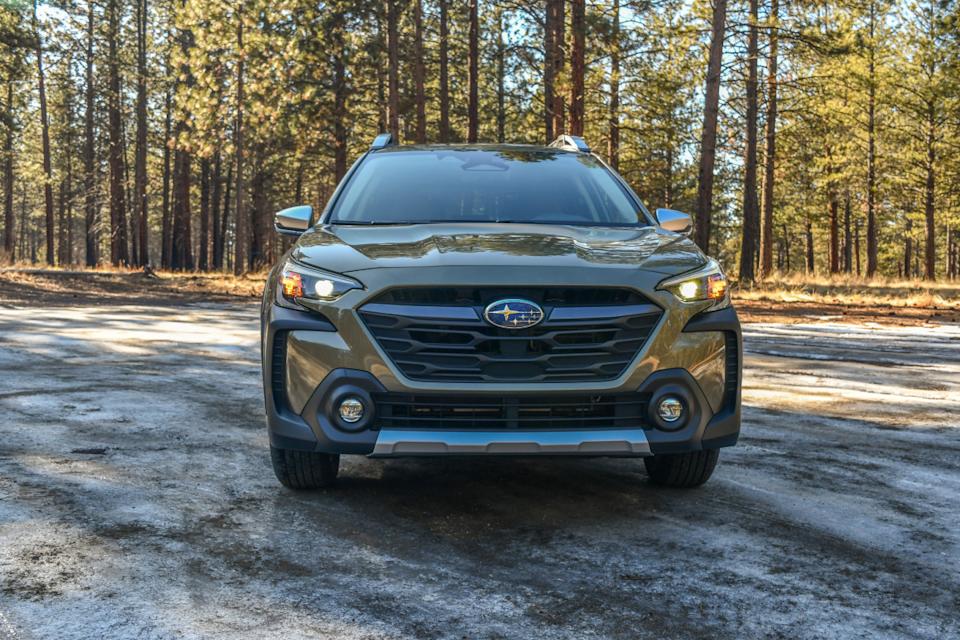 Kristen Brown
Kristen Brown View the 2 images of this gallery on the original article
Subaru’s system is proven and incredibly tough, but because it’s always on, even when the weather is fair, mileage certainly suffers. The company has improved its efficiency by a large margin over the last few decades, but the figures are noticeably different. The Forester, as a non-hybrid, gets a little better mileage since it’s not as large or as heavy as the Outback at around 24 mpg combined, and the CVT helps, but the Mazda was getting 25 mpg doing mostly downtown driving. The Outback was getting around the same, but I did do more highway driving.
Both Mazda and Subaru are incredibly safe options
Mazda and Subaru are two companies that are known for their safety features that come as standard equipment, instead of having to pay extra for them (looking at you, Toyota). Subaru’s Eye-Sight is an award-winning dual-camera system that’s known for its effectiveness in busy areas like cities, but tends to be less effective in poor weather conditions that can block cameras. Mazda’s system is a predictive one that utilizes cameras and radar, making it effective in poor weather conditions. Additionally, cameras help prevent human accidents through features such as cyclist and pedestrian detection. Both systems are highly praised for their effectiveness, and both brands get gold stars for having incredible features as standard equipment.
 Kristen Brown
Kristen BrownTherefore, even if you bought the base level of the Mazda CX-50, Subaru Forester, or Outback, you’d be getting top-shelf safety features for much, much less. Both companies have key features like lane assist, adaptive cruise control, driver attention alert, reverse automatic braking, automatic emergency braking, forward collision detection, blind spot detection, and more—all for a fair price.
Either brand is prepped for adventure
By the features on the CX-50, it’s obvious they were aligning themselves for Subaru’s buyers. Like the Outback and the Forester, the Mazda CX-50 comes with standard AWD at all trim levels, has 8.6 inches of ground clearance, and has an “Off-Road” drive mode that splits the torque and power evenly across all four wheels. Granted, that drive mode isn’t the same as Subaru’s X-MODE, designed for off-road driving, but all three models got good scores in snow, dirt, and mud. All three also come standard with all-season tires, and both brands offer adventure-friendly dealer add-ons like roof rails, cargo boxes or baskets, all-weather mats, cargo nets, and pet-centric options like seat covers.
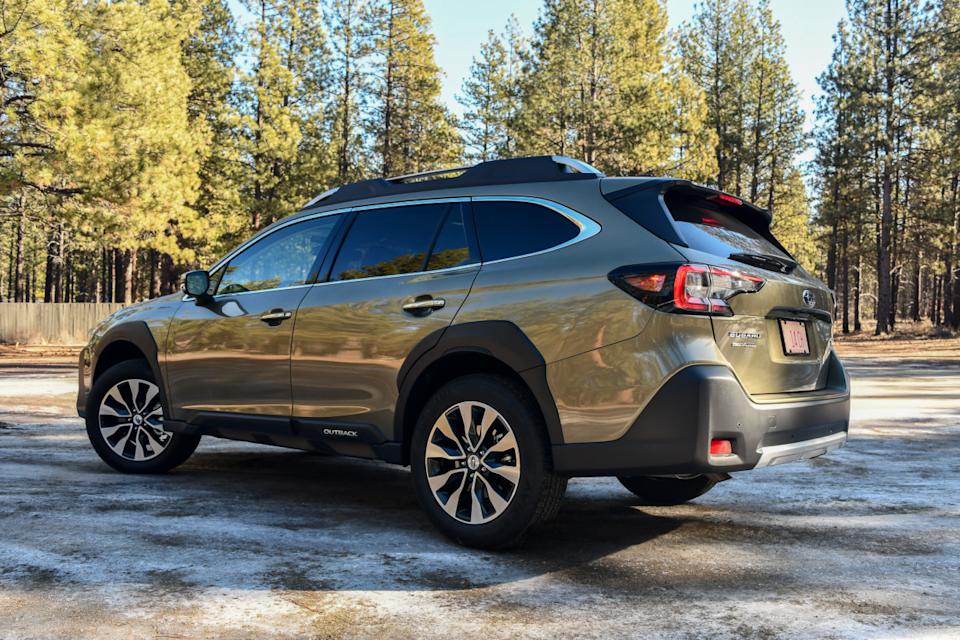 Kristen Brown
Kristen BrownOff-road, the Mazda doesn’t feel as comfortable because of its limited visibility (the seating position is quite low, the windows are smaller and higher up, the hood line is high, and the cameras are a pretty low resolution), but the AWD system was poised, balanced, and incredibly responsive. The Subaru Forester and Outback are very happy to be off-road, because of the high seating position and excellent visibility. Both are very easy to see out of and even easier to drive without the need for cameras, so if you plan on doing a lot of overlanding, Subaru is the way to go. But if you want a family-friendly car that can handle the occasional trail to a remote campsite, the Mazda’s a solid choice.
If cargo and passenger space is a priority, Subaru is the clear winner
The CX-50 is around the same size as either Subaru, with the Subarus being a little taller, wider, and longer, but the low roof line and the low seating position made it feel quite cramped in the driver’s seat compared to the wide open feeling of either Subaru. The Forester has the best visibility out of all three, with a high seating position, a tall roof, and large windows. I was looking over the hood, which made it easy to see the corners of the hood, and since I could look over my shoulder and see behind me, I didn’t even need blind spot warnings. The Outback was also easy to see out of, but not as easily as the Forester.
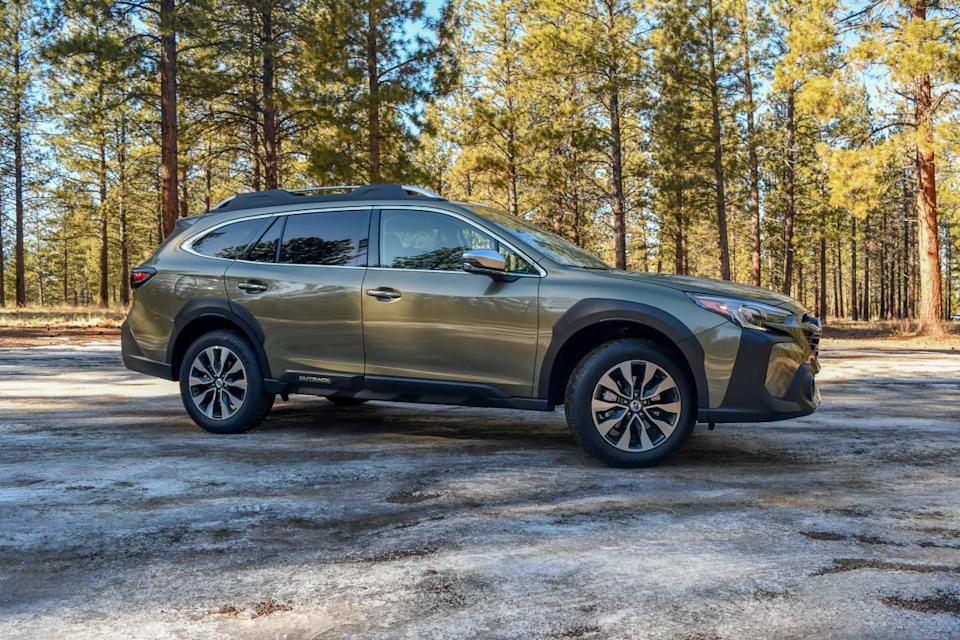
The Outback is the largest of the three, so it shouldn’t be shocking to learn that it has the most cargo and passenger space. The Mazda has decent cargo space, but the rear seats were cramped with both of my toddlers’ car seats. A low roof line means less height, so you can’t put as much in the trunk as you can in either Subaru. That could easily be fixed with a cargo box and basket, though.
Final thoughts
The Mazda CX-50 poses a direct threat to the Subaru Forester and Outback with similar features, similar off-road features, standard AWD, and family-friendly price ranges. The Mazda’s hybrid option with Toyota’s trusted and proven hybrid system makes it hard to pass up, while the Forester’s hybrid system is all-new. Subaru’s excellent visibility and refined X-MODE make it more off-road-ready, but the Mazda’s power and use of an automatic transmission over a CVT make the driving dynamic much more refined and balanced, even when driving daily.
 Kristen Brown
Kristen Brown The Subaru has more passenger and cargo space if you’re shopping for a family car, but if you wanted a fun, spirited adventure SUV and kids weren’t in the picture, the CX-50 would be the one I’d recommend. You can’t go wrong with any of the three cars listed, especially at those prices. When the Outback finally comes out with a hybrid option, the competition will be even stiffer.
Subaru Icons Face Stylish Threat from Mazda first appeared on Autoblog on Jul 21, 2025
This story was originally reported by Autoblog on Jul 21, 2025, where it first appeared.
Subaru's iconic design accompanies an undeniable style that finds the foothold in a rapidly evolving automotive landscape, yet Mazda poses not just another challenge but also serves as creativity-pushing inspiration for Subaru to uphold their stylish threat against established competitors.
Subaru Icons, exemplary of sleek design and uncompromising durability stand poised to confront the bold new stylish threat posed by Mazda – a head-toeningly dynamic showdown between two titans in automotive styling.



